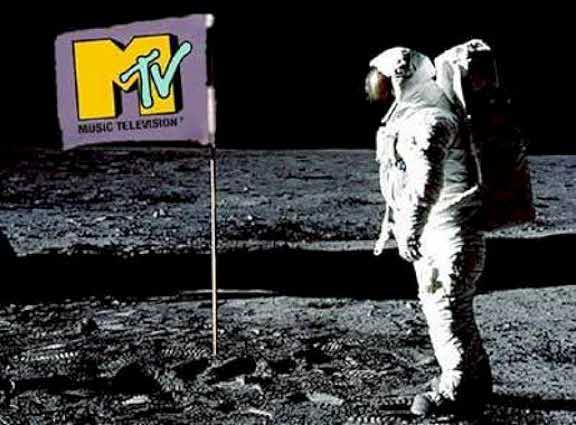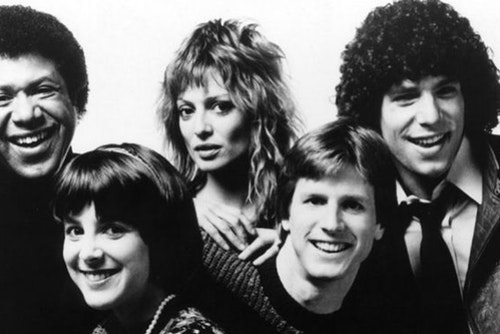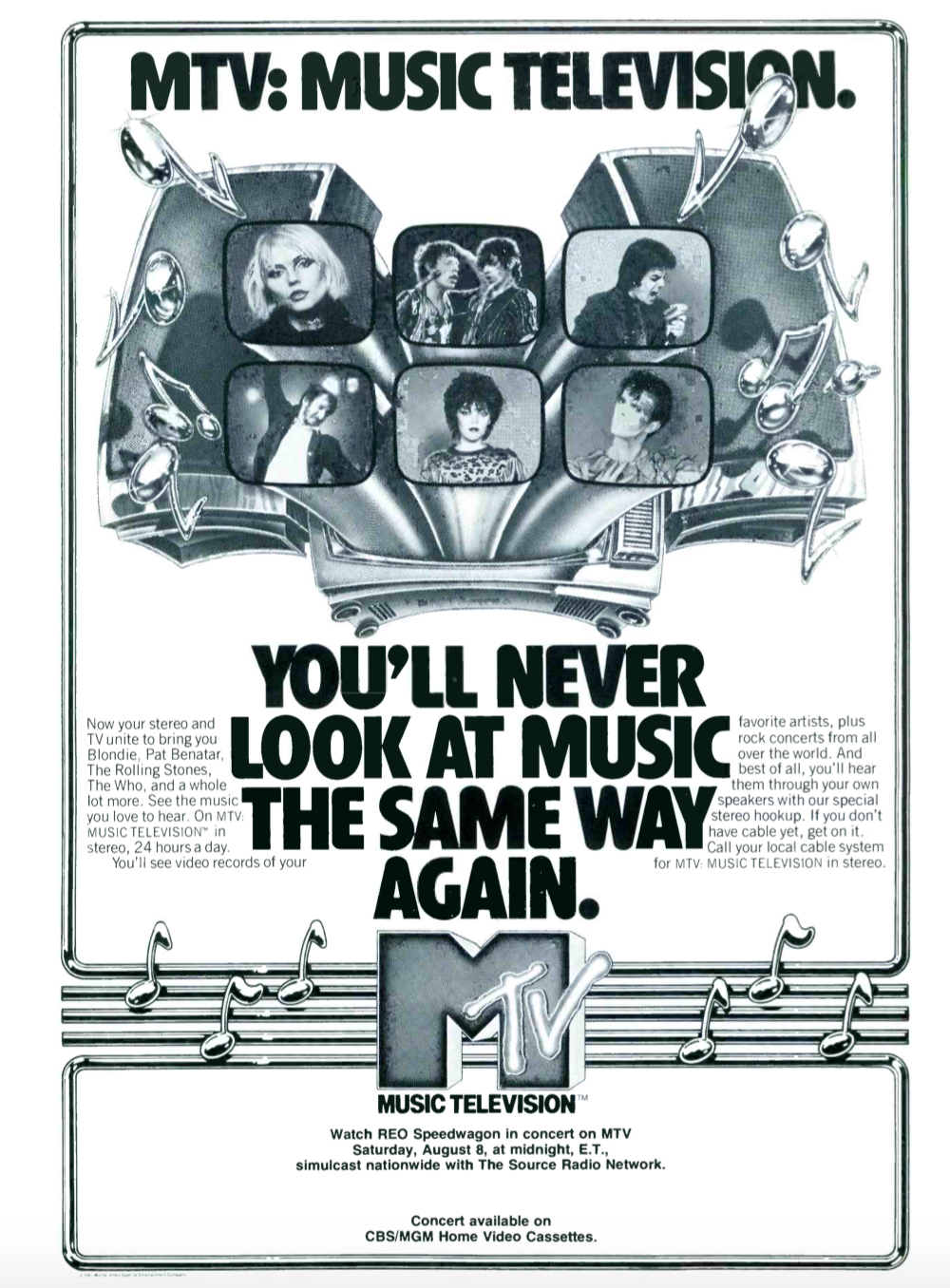 At 12:01 AM Eastern Time on August 1, 1981, MTV: Music Television debuted on cable TV (which at the time had only about 25 channels).
At 12:01 AM Eastern Time on August 1, 1981, MTV: Music Television debuted on cable TV (which at the time had only about 25 channels).
The concept to air 24-hours of music video programming was developed by Warner-Amex Satellite Entertainment (WASEC), a joint venture of Warner Communications and American Express. Its initial executive team was headed by Robert Pittman, a former radio disc jockey and programmer who had most recently been program director at WNBC AM in New York City and had hosted a TV program on the WNBC television station that aired music videos called Album Tracks.

The concept was initially based on album-oriented radio (AOR), and the MTV debut had hosts introducing and back-announcing the video clips who were called “video jockeys” or VJs.
The first five VJs were radio veterans Mark Goodman, Nina Blackwood and J.J. Jackson along with struggling actor and waiter Alan Hunter and a recent NYU grad, Martha Quinn, who had worked on the college radio station, interned at WNBC and appeared in TV commercials.
Watch them introduce themselves…
The first video it played was “Video Killed the Radio Star” by the English new wave band The Buggles.
Oddly, as MTV was not initially available on cable in New York City, the VJs were becoming stars in much of the rest of the nation but remained relatively anonymous in the city where they lived and worked. And MTV needed to shuttle ad agency and record label executives they wanted to show the channel to across the Hudson River to an apartment it rented in Fort Lee, NJ so they could see the network for themselves on cable.

Best Classic Bands founder Greg Brodsky wrote music news for the VJs during the network’s first year. “When I’d call a source about a story and identify who I worked for, I’d often not only have to explain what MTV was, I’d have to tell them what cable TV was,” he says.
Related: The “I Want My MTV” campaign
Record companies were initially skeptical about the concept. But when acts that weren’t being played on radio but did air on MTV started selling albums in markets where the channel aired they started to come around. It would prove to be a boon for new wave music and hard rock acts that weren’t heard on radio as well as classic rock acts that were, and eventually helped drive a sales boom for the record industry, one of MTV’s many effects on popular music.
Some readers may remember sitting and watching for hours at a time, waiting for a favorite clip to air. Today, the network is virtually unrecognizable to those who watched it in its early years.
For the network’s 40th anniversary in 2021, AARP asked original VJs Hunter, Quinn and Goodman to look back at some of the biggest videos from the network’s first decade.
Courtesy: AARP THE MAGAZINE, JUNE/JULY 2021


4 Comments
ou may not realize it but if you enjoyed MTV, thank a Monkee!
Michael Nesmith, who continued to perform as a solo artist long after the 60s quartet broke up, was asked by Island Records to create a promotional video for his 1977 single, “Rio.” It sparked a great idea.
Instead of taping a conventional video of himself performing, he created a comedic short film for the song including women in fruit hats dancing by and Nesmith flying through space.
While there was no outlet for it — especially as the single bombed — Nesmith figured he was onto something.
“Audio records are played on radio, so a video record should be played on video — on television,” he thought. “There should be a broadcast component for the music video just like there is for records.”
He dug up a few clips for a pilot, included the idea of video jocks, or VJs, and called the show “Popclips.” Many rejected the idea, but Warner Bros. executive John Lack was intrigued. Explaining his concept to Lack as “a new kind of TV that played videos 24 hours a day, like a radio station,” Nesmith had found his market.
Warner and partner American Express proceeded with the concept, calling it MTV and launching the network on Aug. 1, 1981. While Nesmith was offered the chance to be MTV’s production head, he turned it down to pursue his other creative projects.
exactly what i was going to say – EXCEPT the Rio video and song was in fact a hit and drove huge sales of the Rio single in the UK and Australia and was played during movie breaks on HBO.
MTV is a stain on the world. Unleashing “reality TV” on a basis not seen before. “16 and Pregnant” and “Jersey Shore” are it’s legacy, by betraying it’s music roots to cater to trash minded Americans which ultimately crossed the globe. A sad commentary on the following generations.
For what it was created for, MTV ceased to exist decades ago … what a shame